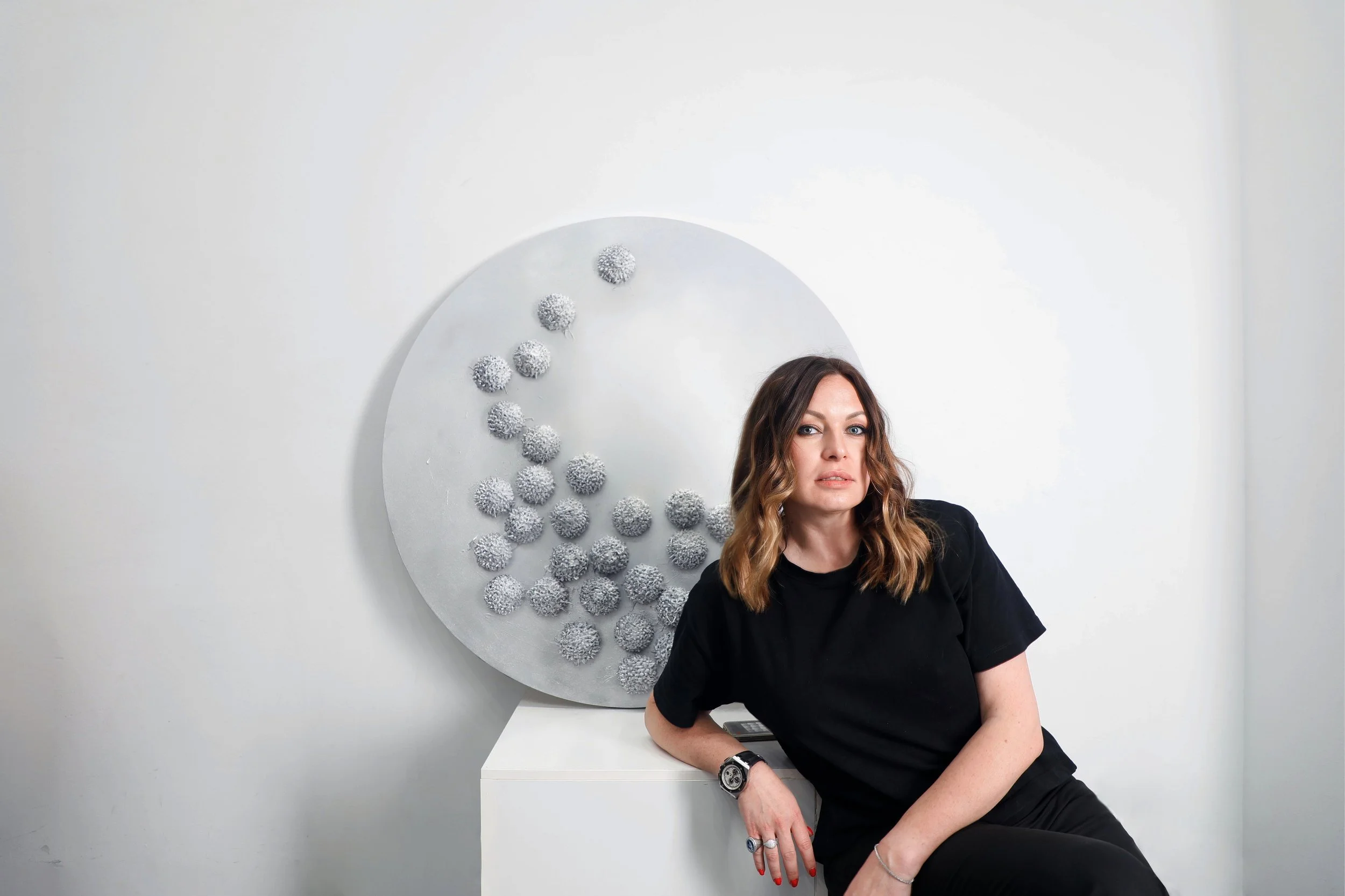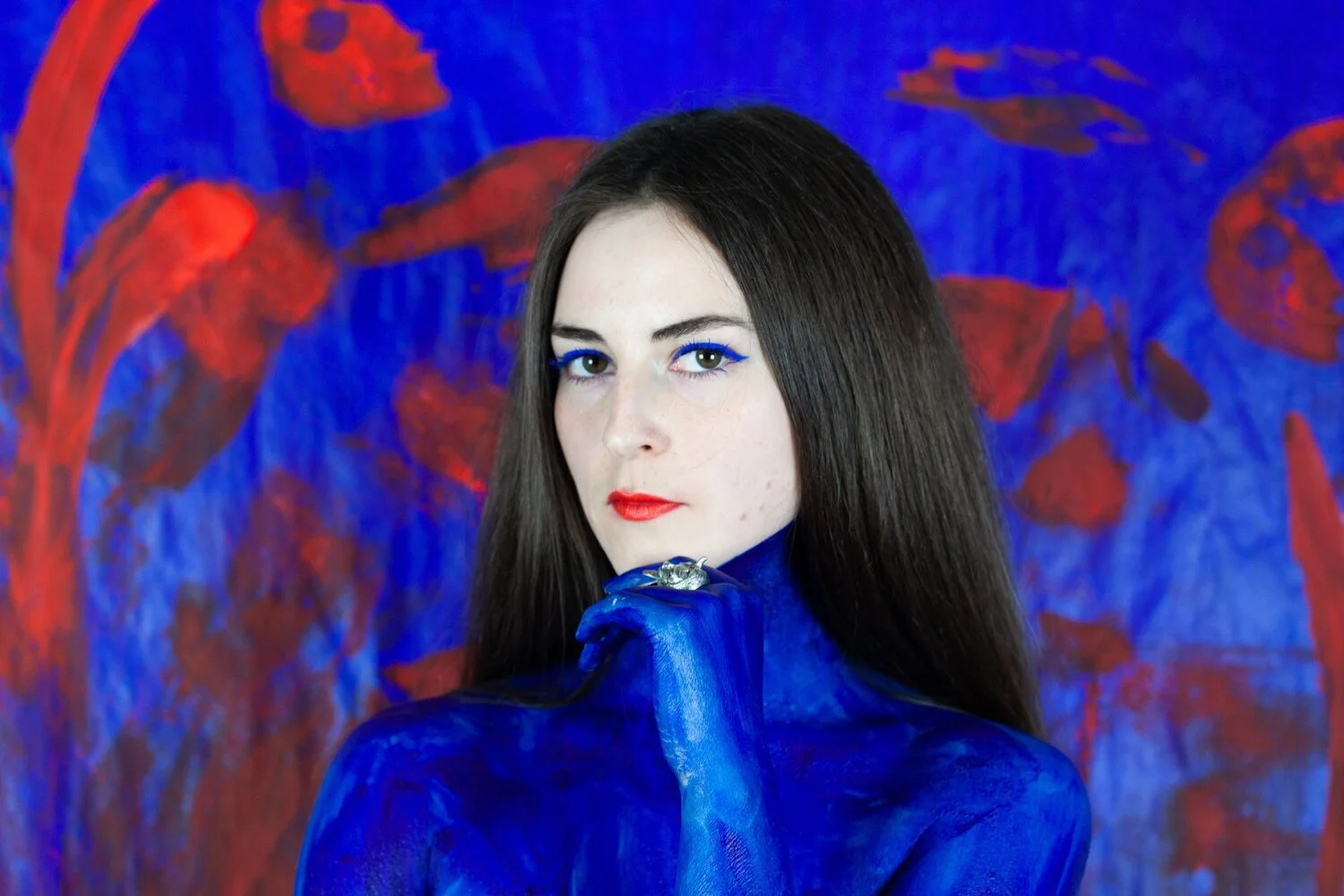8 Questions with Giovanni De Benedetto - Issue03
Giovanni De Benedetto is a mixed media artist featured in Al-Tiba9 magazine ISSUE03, interviewed by Mohamed Benhadj.
Giovanni De Benedetto is a klecksography Italian artist who enhances the aesthetic power of his paintings through the means of photography. Giovanni aims to broaden people’s point of view by making them embrace multiple perspectives to establish a temporary empathic connection for feeling more close as human beings on a deep level.
How did you become interested in art, and How do you successfully express this intention?
I cannot recall the exact moment when I got interested in art in its broadest sense. I can say the form of art that stroke me first when I was around 10 was music. The aesthetic companion of the albums, and the music, created an inner world that resonated inside me. I grasped a correlation to my feelings and a provocation, an irony, to the pre-established order. The relationship between visual and sound has always been really tight for me, and I have always been interested in what I cannot understand immediately. Specifically, the messages through the visual work and its aesthetic that hit attract my attention. As a creative, I look for, and I try to make, something that has a thin balance between a solid message with a dominant aesthetic. When I see one artwork, mine included, I want to feel astonished by it, at first sight, to be brought in its undiscovered paths for digging them. This is my way of understanding a bit more of what surrounds me.
Can you talk a little about your formative years as an artist?
About my academic studies, I got a diploma in Music Performance at the Music Academy Europe in Bologna. Then I moved to Berlin, where I actually live and work, and I graduated at dBs Music in Electronic Music Production.
It could seem that visual and musical studies are two different worlds, but I apply the skills I got from the studies to my visual work. The way I develop my visual projects is strictly related to what I learned during the years to create artworks that resound inside the viewer.
What techniques do you employ to get the results you want?
A PREMATURE artwork is the result of the interdependent relationship between painting and photography, one cannot exist without the other within the creative process. There is not a digital manipulation regarding the structure of each image. The pictures are entirely “analog” because they are painted, but through the mean of photography, I enhance the textures and colors. I consider every PREMATURE artwork as an AKP, that stands for Augmented Klecksography Painting since it is the photography and the soft post-production that make the kind of effect that you can see. This is why the final work of art is the photo print and not the original painting that I call the matrix.
What is most challenging about this process?
Since every PREMATURE image is not predetermined, I like to think about myself as an orchestral director who drives the paint to help the artwork revealing itself. What I create from scratch is the connection with the matter, and together we work in a specific direction to give birth to the work of art. So, the most challenging part of my process is to establish this kind of connection.
Your work always seems dark and rich in detail and symmetry, mostly monochrome. Is this a conscious decision? Are you trying to paint a specific therapist case?
The decision to use a monochrome solution was not conscious. Indeed this year, I started to use specific colors like silver, gold, and red, which create an entirely different outcome.
By getting back to black and white, my work got a direct correlation to the Rorschach tests (neither all the famous psychological tests are monochrome only). Still, it was not a straight influence that I chose to dig into because it happened the other way around. I started to do practice with klecksography, and then I found out that there is a technique called in this way pioneered by Justinus Kerner. About Rorschach, the PREMATURE artworks could be considered an inverted Rorschach test since I use white paint on black color.
How do you carry this feeling to your artistic expression?
I conceive every PREMATURE as a mirror with which the observers and I can reflect ourselves into it, to decipher it for creating our own and unique work of art, since the way every person sees the same PREMATURE artwork is exclusive to her/him. But it is in the sharing of our individual thoughts that resides the power of the whole PREMATURE project, where people try to mutually figure out what they see into the artwork.
In this way, we put themselves in others' shoes, trying to embrace different perspectives at the same time to feel more close as human beings through empathy.
It often happens that an interpretation of a viewer changes forever the way I see my artwork. For instance, in PREMATURE # 29 Phase 2, I have always seen a moth, but now, after an exchange with a viewer, I also see a ghost shape inside the right-wing.
In this way, I included her vision into mine, I have enriched my perspective with the other's one, and this is the core idea behind PREMATURE: being contaminated with others' points of view for broadening our vision of the whole. It could be sound naif, but as an artist, I feel crucial to spread this inclusive kind of ideas nowadays.
What are you currently inspired by?
I am currently inspired by the textures in nature and by inner cracks that I look through sometimes, as always.
Finally, to our readers… Giovanni in three words
Pure Fresh Paint.




















